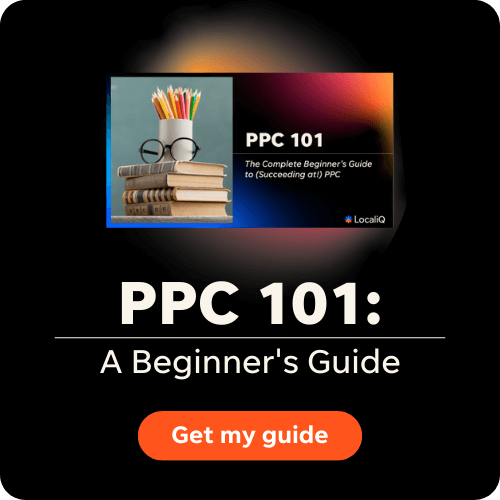In a digital age where our screens are constantly bombarded with content, it can be hard to distinguish between what is genuine and what is a paid advertisement. This is where the concept of native advertising comes into play. Native advertising is a form of paid content that seamlessly blends in with a publication’s style and tone. However, its intricate nature has sparked controversy, leading to concerns about deception and eroding trust among consumers. As a result, professional organizations are now advocating for greater transparency and oversight in native advertising. Surprisingly, native advertising statistics reveal that many consumers remain skeptical and largely unaware of what native advertising truly entails. Despite this, there are shining examples of successful native advertising campaigns from reputable publications such as The Onion, Fast Company, BuzzFeed, Forbes, and Vanity Fair. It’s time to unravel the consumers’ misunderstanding of native advertising and shed light on its potential benefits when executed ethically and effectively.

This image is property of www.wordstream.com.
Consumers’ Misunderstanding of Native Advertising
Native advertising is a form of paid content that seamlessly integrates into a publication’s style and tone, making it appear as though it is a natural part of the editorial content. In simple terms, native advertising is an advertisement that mirrors the look and feel of the platform on which it is displayed, whether it’s an online article, social media post, or video.
Definition of Native Advertising
Native advertising, also known as sponsored content or branded content, is a marketing strategy where advertisers collaborate with publishers to create content that aligns with the publication’s style and tone. The goal is to create an advertisement that appears organic and non-disruptive to the consumer’s browsing experience, ultimately increasing engagement and enhancing brand awareness. Native advertisements typically blend in with the surrounding editorial content, making it challenging for consumers to distinguish between objective journalism and paid promotional material.
Controversies Surrounding Native Advertising
As native advertising has gained popularity, it has also become a subject of controversy. The main concerns revolve around the potential for deception and the erosion of consumer trust. Critics argue that when native advertising is not clearly labeled as sponsored content, consumers may be misled into believing that the information they are reading is unbiased and objective journalism. This blurring of lines between advertising and editorial content can undermine the credibility of the publication and create distrust among consumers.
Moreover, there are concerns about the impact on editorial integrity. Skeptics worry that native advertising may compromise the independence of journalists and the publication as a whole. If advertisers have significant influence over the content creation process, there is a risk that editorial decisions could be swayed by financial considerations rather than journalistic principles. This raises ethical questions about the integrity and reliability of the information presented to consumers.
Calls for Transparency and Oversight
In response to the controversies surrounding native advertising, many professional organizations and industry leaders have called for greater transparency and oversight. These calls aim to ensure that consumers are fully aware of the promotional nature of native advertisements and can make informed decisions about the information they consume.
Several professional organizations have taken action to address these concerns. For instance, the Interactive Advertising Bureau (IAB) has developed guidelines and best practices for native advertising, emphasizing the importance of clearly distinguishing sponsored content from editorial content. Additionally, the Federal Trade Commission (FTC) has provided guidance on disclosure requirements, emphasizing the need for labels that are easily recognized and understood by consumers.
Proposed regulations and guidelines have also emerged to regulate native advertising. Some countries, such as the United States and Canada, have implemented specific regulations governing the disclosure of sponsored content to ensure transparency and consumer protection. These regulations seek to establish clear guidelines on labeling requirements, positioning of disclosures, and the use of language that leaves no room for confusion or ambiguity.

This image is property of www.wordstream.com.
Consumer Skepticism and Unawareness
While native advertising has become increasingly prevalent, studies have shown that many consumers remain skeptical and unaware of what it actually entails. According to a survey conducted by the Pew Research Center, only 38% of respondents were able to correctly identify native advertising as paid promotional content. This lack of understanding can have significant implications for consumer trust and engagement with native advertisements.
Several factors contribute to consumer misunderstanding of native advertising. Firstly, the seamless integration of native advertisements into the publication’s style and tone can be deceptive, making it difficult for consumers to distinguish between editorial content and sponsored material. Additionally, the use of engaging headlines and storytelling techniques in native advertisements can further blur the lines between promotional and non-promotional content, leading consumers to believe they are reading objective journalism.
Consumer reactions to native advertising vary, with some expressing skepticism and others feeling indifferent. Some consumers may view native advertising as a violation of their trust, feeling deceived when they realize that the content they engaged with was, in fact, paid advertising. On the other hand, some individuals may not mind native advertising and consider it a part of the modern advertising landscape. However, it is important to note that the lack of awareness and understanding of native advertising raises concerns about informed consumer consent.

This image is property of www.wordstream.com.
Examples of Effective Native Advertising
Despite the controversies and challenges surrounding native advertising, numerous examples exist of effective implementation that demonstrates its potential as a valuable marketing strategy. These examples showcase how native advertising can captivate audiences while maintaining transparency and staying true to the publication’s style and tone.
The Onion’s Native Advertising Campaigns
Satirical news outlet The Onion has been able to leverage native advertising in a way that aligns with its comedic style and engages its audience. By blending fictional news headlines with sponsored content, The Onion manages to maintain the satirical tone its readers expect, while also delivering brand messages. This approach not only enhances the readers’ experience but also ensures that the sponsored content is fully embraced within the publication’s overall content.
Fast Company’s Successful Native Advertising Strategies
Fast Company, a renowned business and technology magazine, has been lauded for its effective implementation of native advertising. The publication seamlessly integrates sponsored content into its online articles, videos, and even its event coverage. By carefully selecting advertisers whose products or services are relevant to their readers, Fast Company ensures that the native advertisements add value to its audience while maintaining editorial integrity.
BuzzFeed’s Approach to Native Advertising
BuzzFeed, a pioneer in creating viral content, has developed a successful model for native advertising. Through their sponsored posts, BuzzFeed seamlessly incorporates advertising into their listicles and quizzes, ensuring that the sponsored content is entertaining and shareable. By leveraging their unique content creation techniques and developing partnerships with advertisers, BuzzFeed has found a way to effectively engage their audience while generating revenue through native advertising.
Forbes’ Native Advertising Initiatives
Forbes, a widely recognized business publication, has embraced native advertising as a way to deliver valuable content to its readers. They have developed an innovative platform called BrandVoice, which allows companies to share their expertise and insights directly with Forbes’ audience. By carefully curating the contributors and content, Forbes ensures that sponsored content aligns with the interests of their readers, maintaining the integrity of their publication.
Vanity Fair’s Effective Native Advertising Campaigns
Vanity Fair, a prestigious lifestyle magazine, has successfully implemented native advertising through its Partnerships division. By collaborating with advertisers to create engaging and cinematic narratives, Vanity Fair seamlessly integrates sponsored content into its online articles, videos, and social media platforms. This approach not only captivates readers but also aligns with the publication’s high-quality aesthetics and brand identity.
In conclusion, consumers’ misunderstanding of native advertising remains a significant challenge. The controversies surrounding native advertising, calls for transparency and oversight, consumer skepticism, and lack of awareness all contribute to the need for education and informed consumer consent. However, through effective implementation techniques showcased by various publications like The Onion, Fast Company, BuzzFeed, Forbes, and Vanity Fair, native advertising can find a balance between engaging audiences and maintaining transparency, ultimately reshaping the advertising landscape.

This image is property of www.wordstream.com.
